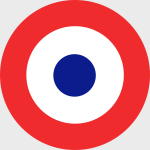Wings of the Great War WW15003 French Spad XIII Biplane Fighter - Lt. Armand de Turenne, N48/N12, 1918 (1:72 Scale)
"A very courageous pilot who gives daily the highest example of boldness and initiative. The 6th of July 1917 he downed, in the course of one flight, his third and fourth German planes, one of these in our lines. Cited in orders three times."
- Chevalier de la Legion d'honneur awarded to Lt. Armand de Turenne, July 22nd, 1917
 The SPAD S.XIII was a French biplane fighter aircraft of World War I, developed by Socit Pour L'Aviation et ses Drivs (SPAD) from the earlier highly successful SPAD S.VII. It was one of the most capable fighters of the war, and one of the most-produced, with 8,472 built and orders for around 10,000 more cancelled at the Armistice.
The SPAD S.XIII was a French biplane fighter aircraft of World War I, developed by Socit Pour L'Aviation et ses Drivs (SPAD) from the earlier highly successful SPAD S.VII. It was one of the most capable fighters of the war, and one of the most-produced, with 8,472 built and orders for around 10,000 more cancelled at the Armistice.
The SPAD XIII was standardized by the Aronautique Militaire as the equipment of its own escadrilles de chasse (fighter squadrons) for 1918. The SPAD was also the first choice of the United States Air Service - however a shortage of SPADs led to the available production Nieuport 28s equipping four American squadrons between March and August 1918. It thus became the first aircraft to see operational service with an American fighter squadron.
The SPAD S.VII was a single-seat fighter aircraft powered by a 150 horsepower (110 kW) Hispano-Suiza 8A water cooled V-8 engine and armed with a single synchronised Vickers machine gun. It demonstrated excellent performance for the time, and entered service with the French Aronautique Militaire in August 1916. By early 1917, however it had been surpassed by the latest German fighters, leading French flying ace Georges Guynemer to lobby for an improved version telling the SPAD designer Louis Bchereau that "The 150 hp SPAD is not a match for the Halberstadt ... More speed is needed." An initial solution was to increase the compression ratio of the Hispano-Suiza engine, increasing its power to 180 hp (130 kW), which gave significantly improved performance, allowing the SPAD S.VII to remain competitive, but Hispano-Suiza were developing a geared version of the 8A engine, which would produce greater power, and this engine was chosen by Bchereau for two new fighter aircraft. First to fly was the S.XII, armed with a 37 mm cannon firing through the propeller shaft. This saw limited use, but was followed into production by the more conventionally armed S.XIII.
Pictured here is a 1:72 scale replica of a french-built Spad XIII biplane fighter that was piloted by Lt. Armand de Turenne during 1918.
Sold Out!
Dimensions:
Length: 4-inches
Wingspan: 5-inches
Release Date: December 2015
Historical Account: "Chevalier de la Legion d'honneur" - Capitaine Armand Jean Galliot Joseph de Turenne was a World War I flying ace credited with 15 aerial victories.
The Marquis de Turenne was a pre-war cavalryman who transferred to aviation after the war began. In June 1916, he was assigned to Escadrille 48 as a Nieuport pilot. He scored his first victory on November 17th, 1916; by September 30th, 1917, he had half a dozen to his credit. Five of them were shared, with fellow aces Jean Matton, Gilbert de Guingand, and Rene Montrion.
De Turenne then transferred to Escadrille 12 as its commander. In his nine victories with this squadron, he continued teamwork in combat and branched out to become a balloon buster by downing two observation balloons. He not only shared victories with fellow aces Marcel Marc Dhome and Emile Regnier, but with several other pilots. An interesting sidelight on de Turenne's victory list is that he had only two solo victories, and there were no fewer than fifteen other pilots sharing one or more of the other thirteen triumphs.
He died on December 10th, 1980.


